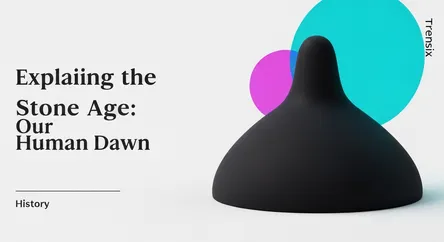History
Explaining the Stone Age: Our Human Dawn

Discover the Stone Age, the vast prehistoric era defined by stone tools that laid the foundation for all human civilization and technology.
What is it?
The Stone Age is a broad prehistoric period that lasted for roughly 3.4 million years, ending between 4000 and 2000 BC. It is defined by the widespread use of stone to make tools and weapons. This enormous era, covering about 99% of human technological history, is divided into three main periods: the Paleolithic (Old Stone Age), the Mesolithic (Middle Stone Age), and the Neolithic (New Stone Age). Early humans were nomadic hunter-gatherers who developed increasingly sophisticated stone implements, learned to control fire, created the first art, and eventually transitioned to settled agricultural communities in the Neolithic period.
Why is it trending?
The Stone Age remains a subject of fascination because it represents the origin story of humanity. New archaeological discoveries continually reshape our understanding of early human intelligence, creativity, and adaptability. Concepts like the "paleo diet" draw inspiration from this era, sparking public interest in the lifestyle of our ancestors. Furthermore, understanding the profound environmental changes and human migrations of the Stone Age provides valuable context for contemporary challenges, ensuring its enduring relevance in science and popular culture.
How does it affect people?
The innovations of the Stone Age are the bedrock of modern life. The development of the first tools fundamentally altered human evolution, enabling better nutrition and defense. The transition from nomadic life to permanent agricultural settlements during the Neolithic Revolution was a pivotal moment that led to the development of villages, cities, and complex societies. Innovations like farming, animal domestication, and early forms of art and music were not just historical milestones; they were the essential first steps that made every subsequent development, from the wheel to the smartphone, possible.